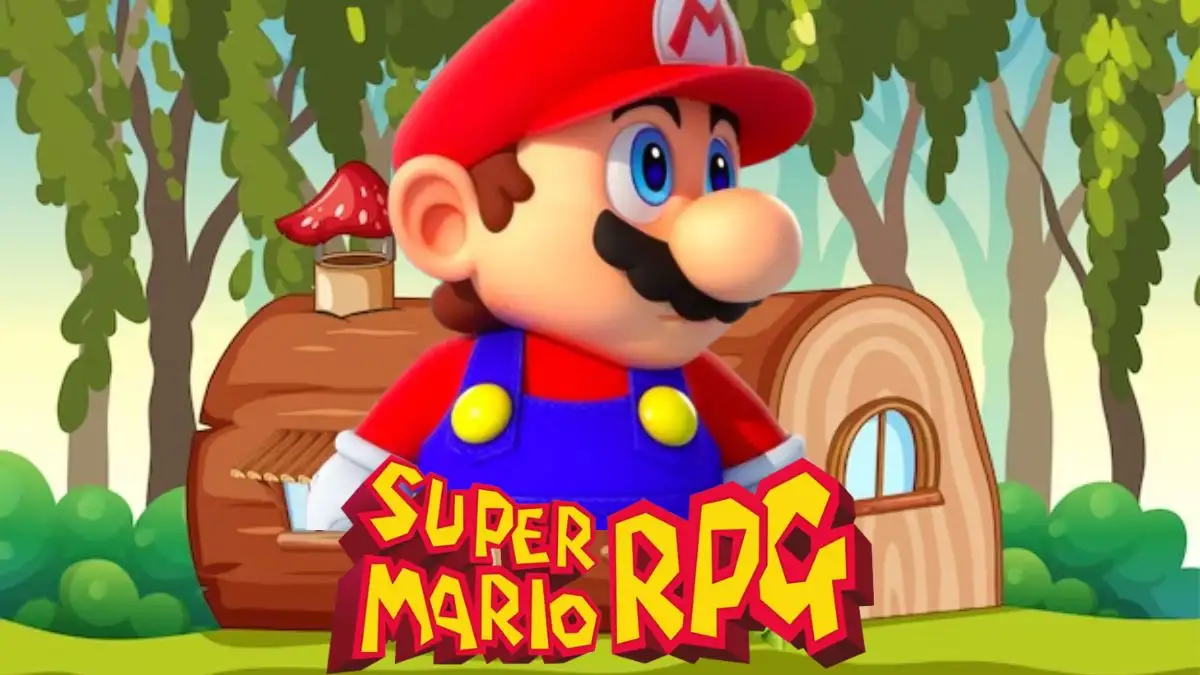Super Mario RPG’s action scale changes the game
Super Mario RPG takes its combat to the next level with the introduction of the Action Scale. In this classic role-playing game, players engage in turn-based combat, strategically deciding each character’s actions. While the core combat system remains faithful to the original 1996 game, the action meter injects new energy and excitement. This innovative feature rewards players for perfectly timed button presses, allowing them to deal more damage, block attacks, and unlock powerful moves as the meter fills up. It adds a new layer of strategy that makes the gaming experience appealing to both old fans and new players alike.
- Lethal Company Keybinds, Lethal Company Controls
- Quantum Essence Starfield, What is Quantum Essence in Starfield? Where to Get Quantum Essence?
- How Long is Robocop Rogue City? and Robocop Rogue City Wiki, Gameplay, and Trailer
- My Hero Ultra Rumble Patch Notes Includes Bug Fixes, System Improvements and more
- Destiny 2 Warlord Ruin Guide and Full Walkthrough
The action gauge in Super Mario RPG is an excellent addition that enhances the overall combat system. It brings a dynamic element to combat, requiring players to pay close attention to the timing of receiving bonuses and stronger attacks. This improved system, while rooted in the game’s nostalgic past, offers a modern twist that not only respects the original but elevates gameplay, making it a key game-changer.
You are watching: Super Mario RPG’s Action Gauge is a Game-Changer, Super Mario RPG’s Action Gauge Explained
Unlock the closely guarded secrets to succeeding in the game with our articles on NEWSTARS Education. Don’t miss the opportunity to enhance and enhance your experience. Join us today and get the knowledge you need to excel in the games you love.
Super Mario RPG Action Metrics Explained
Perfectly timed attack:
Super Mario RPG introduced the “Action Gauge,” a game mechanic associated with perfectly timed button presses. The player performs the attack and presses the A button exactly when the attack lands, thereby increasing the damage. Well-timed actions can even damage multiple enemies, adding an extra layer of strategy to encounters.
Filling the action scale:
See more : Super Mario RPG Walkthrough, Tips, Minigames, Bosses, and More
Successful execution of action commands gradually fills up the action meter. The more consecutive successes you have, the faster the meter fills up. Players can earn various bonuses, such as increased magic damage or defense. Once the meter reaches 100%, players will unlock more powerful moves, starting with the Toad support ability and progressing to a powerful trio of moves as the game unfolds.
Strategic Depth:
Action scales not only reward skilled play but also introduce strategic depth. Players must now pay closer attention to their attacks, aiming for precise timing to gain rewards and unlock more powerful abilities.This mechanic adds a strategic layer to the game, taking the combat system beyond a traditional turn-based RPG
trend
More RPGs may want to use action scales
Super Mario RPG’s innovative motion meter not only enhances its own gameplay, but sets a precedent for future RPGs. The combination of action commands and action gauges introduces an additional layer of strategy that demands player focus and skill during combat. Since this feature has impacted subsequent games, it will need to be expanded upon in future Mario RPGs and other games.
Nintendo’s implementation of Action Gauge provides a solid foundation for RPG developers to explore. Future games could build on this concept, introducing more abilities, diverse ways to fill out the meter, and perhaps additional strategic elements. Action Gauge has already proven its worth in Super Mario RPG and has the potential to become a staple of the RPG genre, providing players with a more engaging and dynamic combat experience.
Super Mario RPG
See more : Free Fire Redeem Codes (August 17, 2023)
Super Mario RPG: Legend of the Seven Stars is a video game developed by Square and published by Nintendo in 1996 for the Super Nintendo Entertainment System (SNES). It was the last Mario game for the SNES and was directed by Chihiro Fujioka and Yoshihiko. Maekawa was produced by Shigeru Miyamoto and the music was composed by Yoko Shimomura.
The game’s storyline revolves around Mario and his friends as they aim to defeat the Blacksmith Gang, who have disrupted their world and broken up the Star Road’s seven star fragments. It is worth noting that “Super Mario RPG” is the first role-playing game (RPG) in the “Mario” series, drawing on elements from Square RPG series such as “Final Fantasy”. It introduces turn-based combat and isometric 3D environments, bringing a whole new perspective to exploration and platforming in the Mario universe.
Super Mario RPG
Super Mario RPG combines elements of Square’s Final Fantasy series with the gameplay style of the Super Mario Bros. platformer. The game has two main parts: adventure and turn-based combat sequences. Aside from combat, gameplay resembles an isometric 3D platformer, incorporating classic Mario elements such as interacting with question blocks.
Unlike typical RPGs, there are no random encounters in the game; enemies are visible on the battlefield, and combat only occurs when Mario comes into contact. The player’s team starts with Mario and expands to five characters, with up to three characters participating in the battle. Each character, such as Toadstool, Geno, and Bowser, has unique abilities. The combat system follows a traditional turn-based approach, with action commands requiring timed button presses, a feature that would later appear in other Mario RPGs.
super mario cosplay trailer
Disclaimer: The above information is for general information purposes only. All information on this website is provided in good faith, but we make no representations or warranties, express or implied, as to the accuracy, adequacy, validity, reliability, availability or completeness of any information on this website.
Source: https://www.thanhphotre.edu.vn
Category: Gaming
